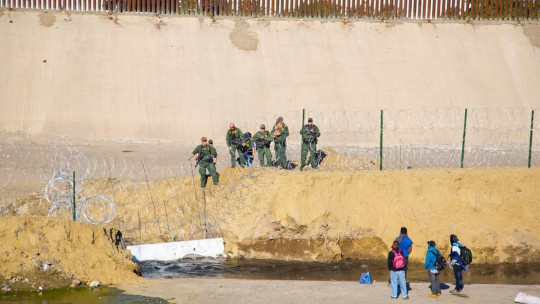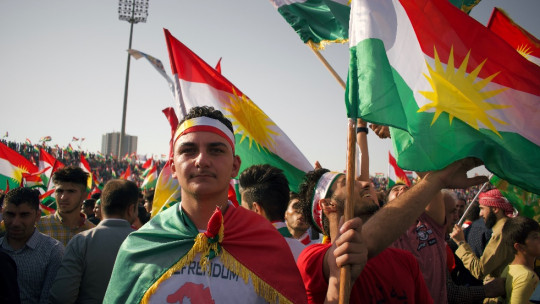
Throughout history there have been many occasions on which large migratory movements have occurred.
Migrants can leave their homes for multiple reasons with the intention of finding a better place where they can survive and ensure a good future.
To understand this phenomenon it is necessary to take into account the main causes and consequences of migration and everything that entails. Let’s see it.
Causes of migration
Those who leave their country behind do not do so on a whim. Wars, natural disasters, political and ethnic persecution and lack of opportunities are some of the causes behind migratory movements, and they can affect people in very different ways.
1. Political asylum
Sometimes, the political situation of a State can lead to a certain degree of repression towards political dissent. In this case, a dissident individual may decide to leave the country for fear of reprisals (such as imprisonment, torture, etc.). This is known as political asylum
2. Humanitarian (or economic) asylum
When the individual decides to migrate from their country of origin for reasons related to poverty, We usually talk about humanitarian or economic asylum
3. Cultural migration
Sometimes, the migrant decides to leave their country of origin in search of a better education or better opportunities.
4. Family migration
If the migrant makes the decision to leave their country to reunite with family members who are in another State, it is usually referred to as migration for family reasons.
5. Migration due to war
When a country or region is in the grip of a war, the population may decide to leave their homes to escape the danger posed by war, not only in its purely violent aspect, but also due to the scarcity of resources it causes.
6. Migration due to humanitarian catastrophe
If a region or a country has been devastated by a natural disaster, such as a tsunami or an earthquake, the people from that place can migrate seeking to rebuild their lives in a more stable territory.
Types of consequences of migration
Given the varied causes behind it, human migration is a complex phenomenon and has very diverse repercussions on both the society of origin and the receiving one.
Let’s see the consequences of migration both from the point of view of the migrant and from a more social and cultural approach.
1. Psychological
Moving away from the place where you grew up and leaving all your loved ones behind can be very shocking This becomes especially traumatic when fleeing one’s country of origin, whether for political reasons or a natural disaster, in which flight involves a life or death situation.
Normally, the people who are forced to emigrate are young people with a partner who leave them in their country, dealing a serious blow to the stability of the relationship.
As much as new technologies help shorten distances, a hug, a kiss or a caress are not things that can be sent. The lack of family warmth can generate feelings of loneliness and hopelessness, which lead to situations of deep sadness.
Furthermore, both those who stay and those who leave feel that distance makes it impossible for them to share everything that happens to them. By not having all the information, situations occur in which both parties fear the worst.

Symptoms
Common symptoms in migrants are sadness, crying, stress, a feeling of insecurity and rejection by the native population.
The migration process emotionally affects all ages, but children are especially vulnerable
If they have emigrated alone, minors are left completely unprotected, which can encourage them to develop criminal behavior to survive. On the other hand, if they travel with their families, maturational development is abnormal, with children who are too mature for their age or adolescents with childish behaviors.
If the reason for leaving the country of origin is a war or a natural disaster, it is not unusual to find immigrants suffering from PTSD, having flashbacks of the moments in which their lives were in danger and remembering them over and over again, assuming a great interference in your daily life.
Many immigrants suffer from Ulysses syndrome, in which there is a set of grief that occurs when the immigration project does not develop according to plan.
2. Economic
Migratory movements can have several repercussions, not only in the country where they end up, but also in the country of origin. On many occasions, people migrate in large numbers, which considerably decreases the population of their country.
This means a reduction in unemployment, given that many migrants decide to leave their country when they see that they cannot find work, and those who stay benefit from less job competition. Migrants send money to their relatives, helping them with the family economy and allowing them to survive.
Regarding the receiving country, The arrival of young people allows jobs to be filled that the native population is not willing to do because they are low-skilled and poorly paid jobs.
However, there are also negative repercussions. If the country of origin was already poor, the fact of losing economically active people represents an added obstacle. Also, by losing population, consumption possibilities are lost and, although money is sent to families, it is very fragmented, which does not allow them to escape poverty.
In the receiving country, the arrival of a low-skilled and desperate population harms the less prepared native population. Businessmen opt for foreigners, who are willing to do anything to earn a miserable income.
As there is more population, governments are forced to reduce the salary of natives.

3. Sociocultural
Migrants have their own traditions, language, religion and ways of behaving, which may be very different from those of the receiving society. This can cause two phenomena, depending on how the interaction between the foreigners and the natives is.
The arrival of people from other cultures can enrich the receiving society, becoming more open and plural as different ethnic groups coexist in it.
On the other hand, xenophobic ideas may arise in the national population, who consider that the arrival of foreigners distorts society, seeing them as dangerous people who contaminate their own culture or are directly making it disappear.
The society of origin, by losing a significant number of young people, ages, while the opposite process occurs in the receiving society. This is because the majority of migrants are between 25 and 35 years old, who can reproduce in the new country, increasing birth rates and fertility.
4. Policies
The arrival of immigrants can motivate the development of xenophobic-inspired laws such as those that prohibit the use of traditional clothing from other countries or that deny the right to assistance to people in an irregular situation.
Laws can also be implemented that have the purpose of selecting those most useful immigrants depending on the needs of the country.
For example, if more research is needed, visas can be granted to foreigners who are scientists, technicians or specialists in various disciplines. Immigrants can also be let in with the aim of providing cheap labor to build infrastructure at a lower price and more quickly.
There may be tensions between nationals and foreigners that make native people opt for increasingly extremist ideologies, voting for parties whose only aspiration is to expel those who are not from the country, leaving aside much more necessary social policies that would benefit significantly to the receiving society.
5. Logistics and techniques
The existence of migratory flows causes the emergence new needs to be covered in relation to urban planning and the creation and maintenance of traffic routes For example, historically one of the consequences of migration has been the appearance of dormitory cities to accommodate migrants, the establishment of public or corporate transportation lines to take workers to factories, the increase of cities, depopulation of certain relatively isolated rural areas (and the application of policies to repopulate or give new uses to old buildings), etc.
In other words, emigration poses not only quantitative economic challenges, but also qualitative ones, since it is necessary to anticipate and accompany the transfer of large numbers of people on a more or less large time scale.








